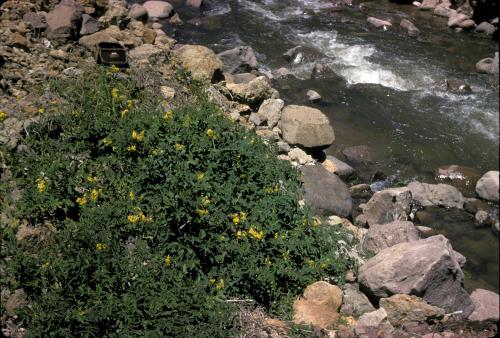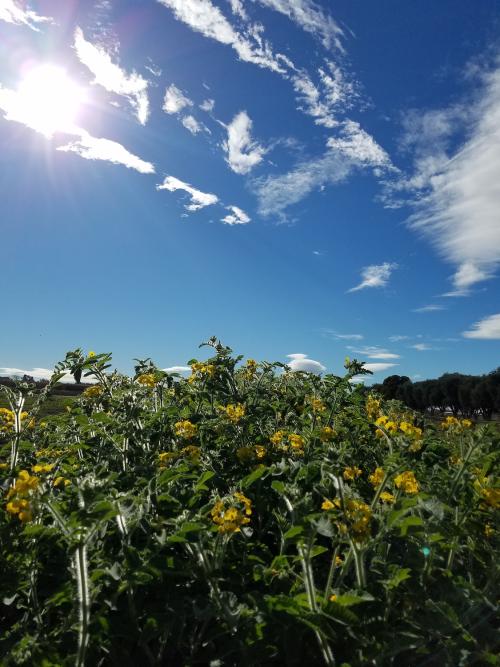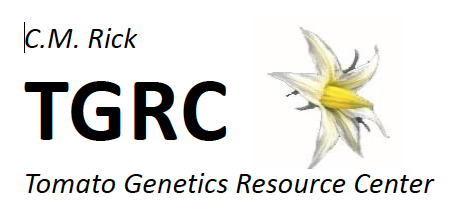
Steve Tanksley's group (Cornell Univ.) donated a series of introgression lines (ILs, a.k.a. BILs or NILs) representing the genome of S. habrochaites LA1777 in the background of S. lycopersicum cv. E-6203. Each line (there are a total of about 98, LA3913 - LA4010) contains one to several homozygous chromosome segments introgressed from S. habrochaites that are identified by markers (see map below). As a whole, the population covers at least 85% of the wild species genome. The population includes a core set of 57 lines (LA3913 - LA3969) that provide good genome representation with a minimum number of segments in each line (the majority are isogenic). The remaining lines (LA3970 - LA4010) contain additional segments (up to several per line) to increase genome coverage.
Most of the lines are reasonably fertile. However, several are partially sterile, particularly under our field conditions, and should be increased in the greenhouse and manually self pollinated to ensure fruit set. Our seed supplies of the sterile lines are limited, so only small samples will be provided.
To view a list of all the S. habrochaites ILs, search Database Queries/Core Collections and Mapping Populations.
A graphical genotype map of the introgressed segments in each line from the paper by Monforte & Tanksley (2000) can be downloaded below.
References
Monforte, A.J. and S. D. Tanksley (2000) Development of a set of near isogenic and backcross recombinant inbred lines containing most of the Lycopersicon hirsutum genome in a L. esculentum genetic background: a tool for gene mapping and gene discovery. Genome 43: 803-813.

